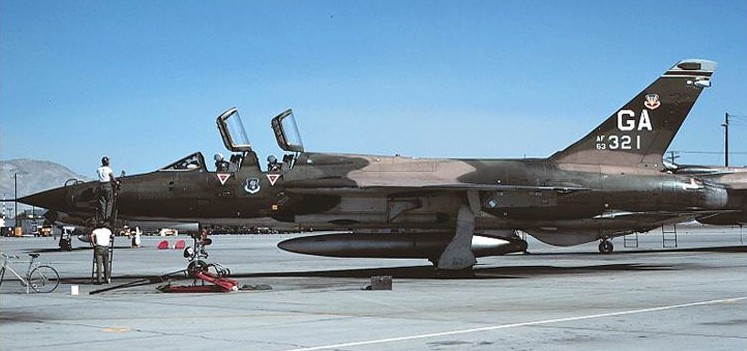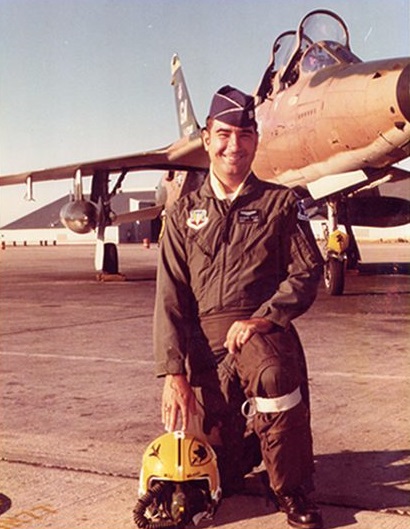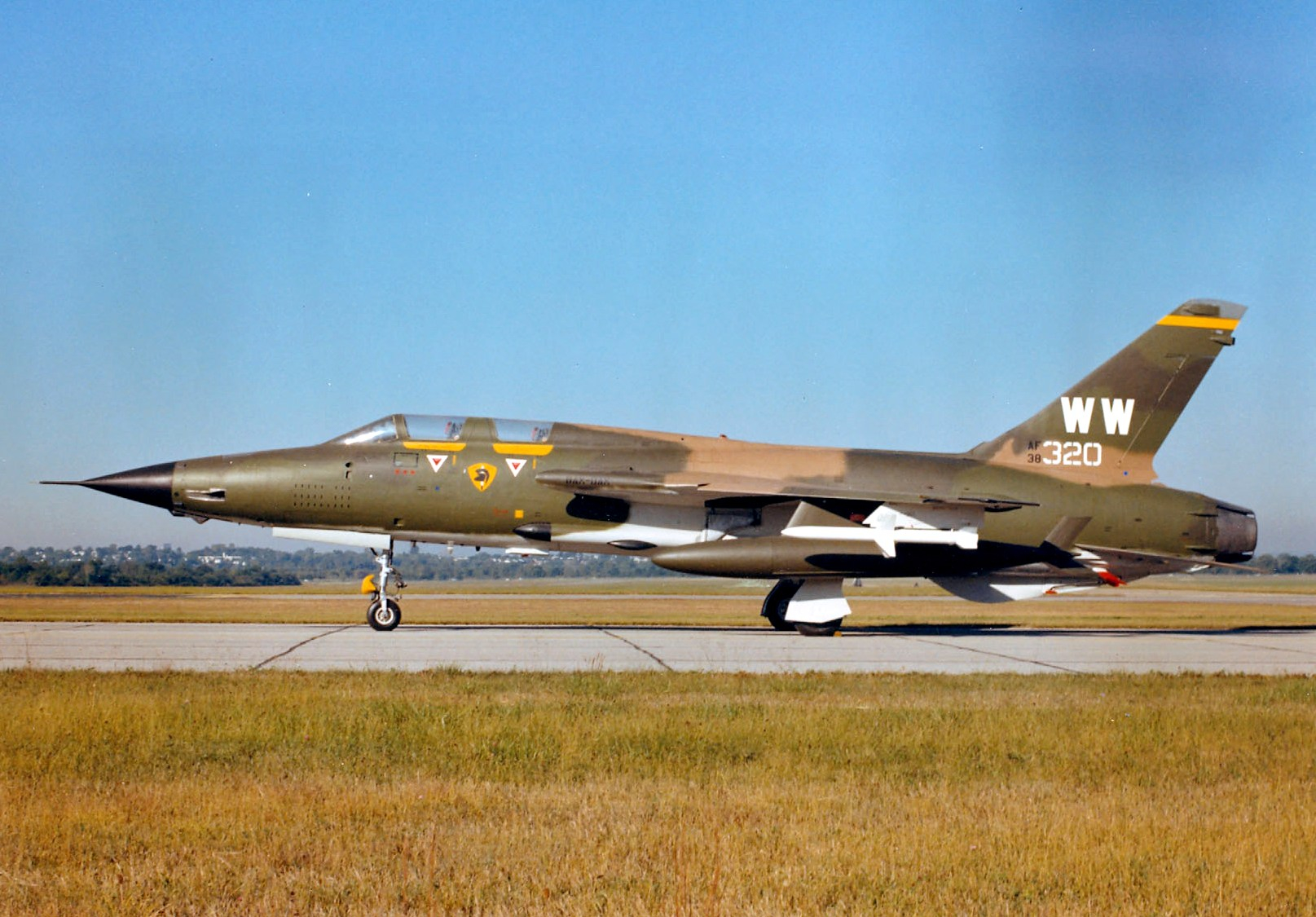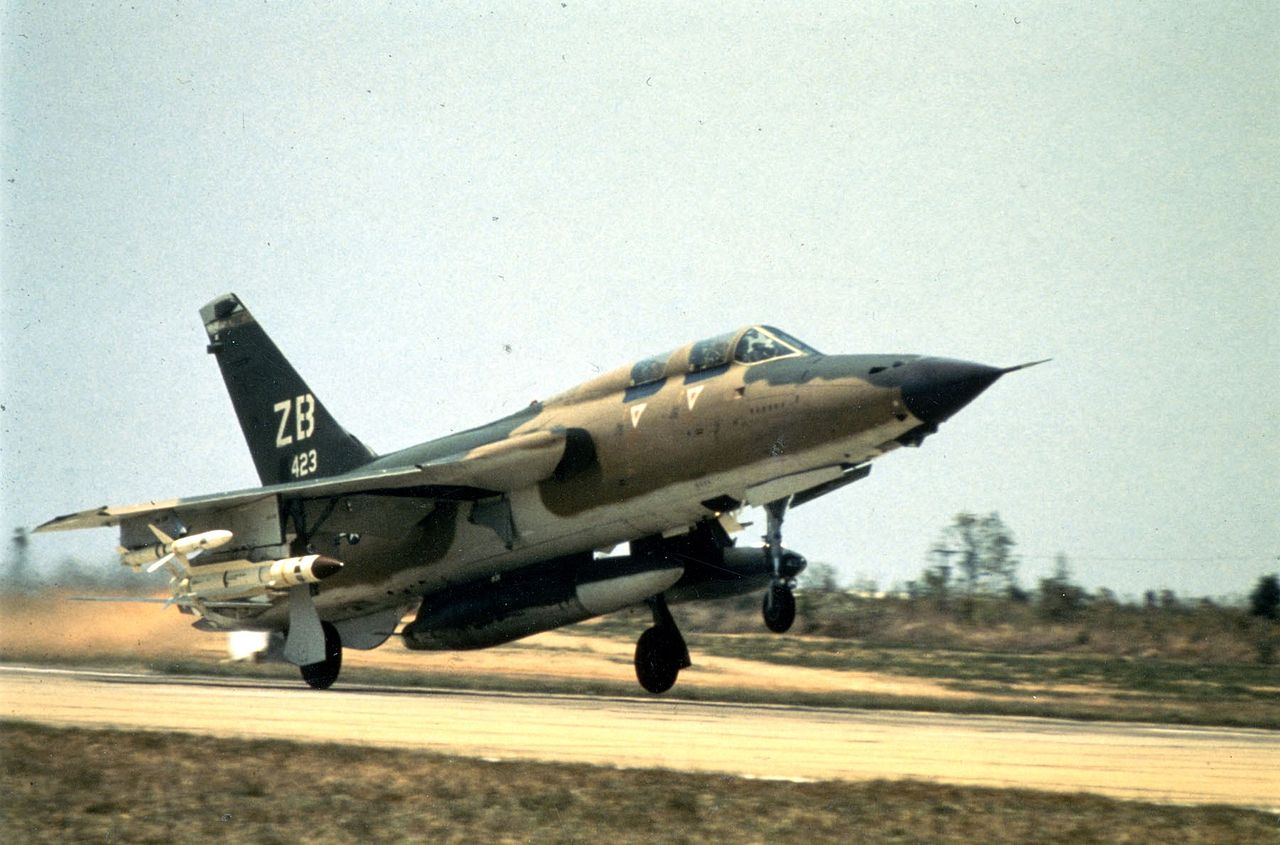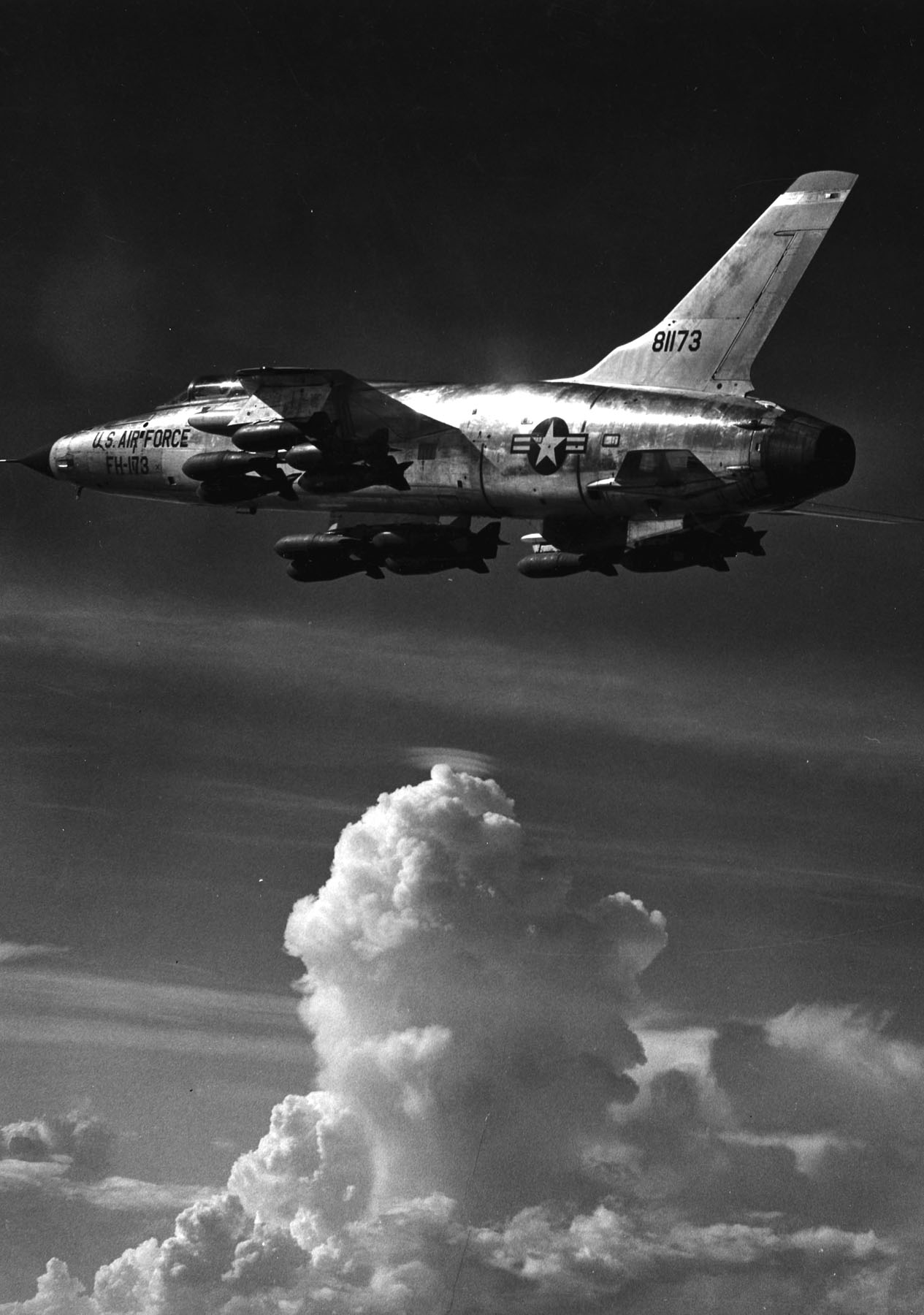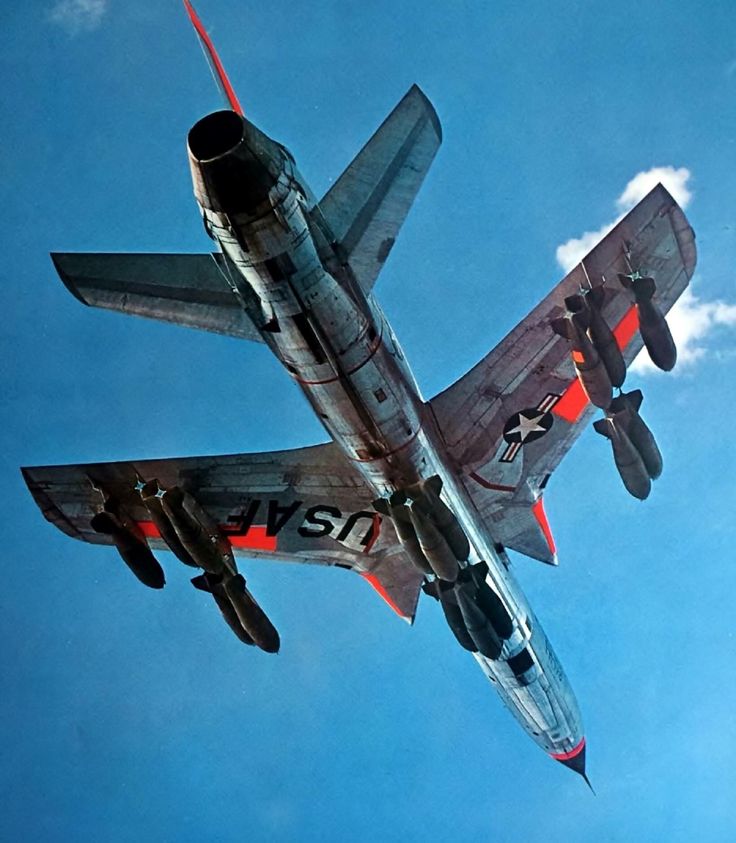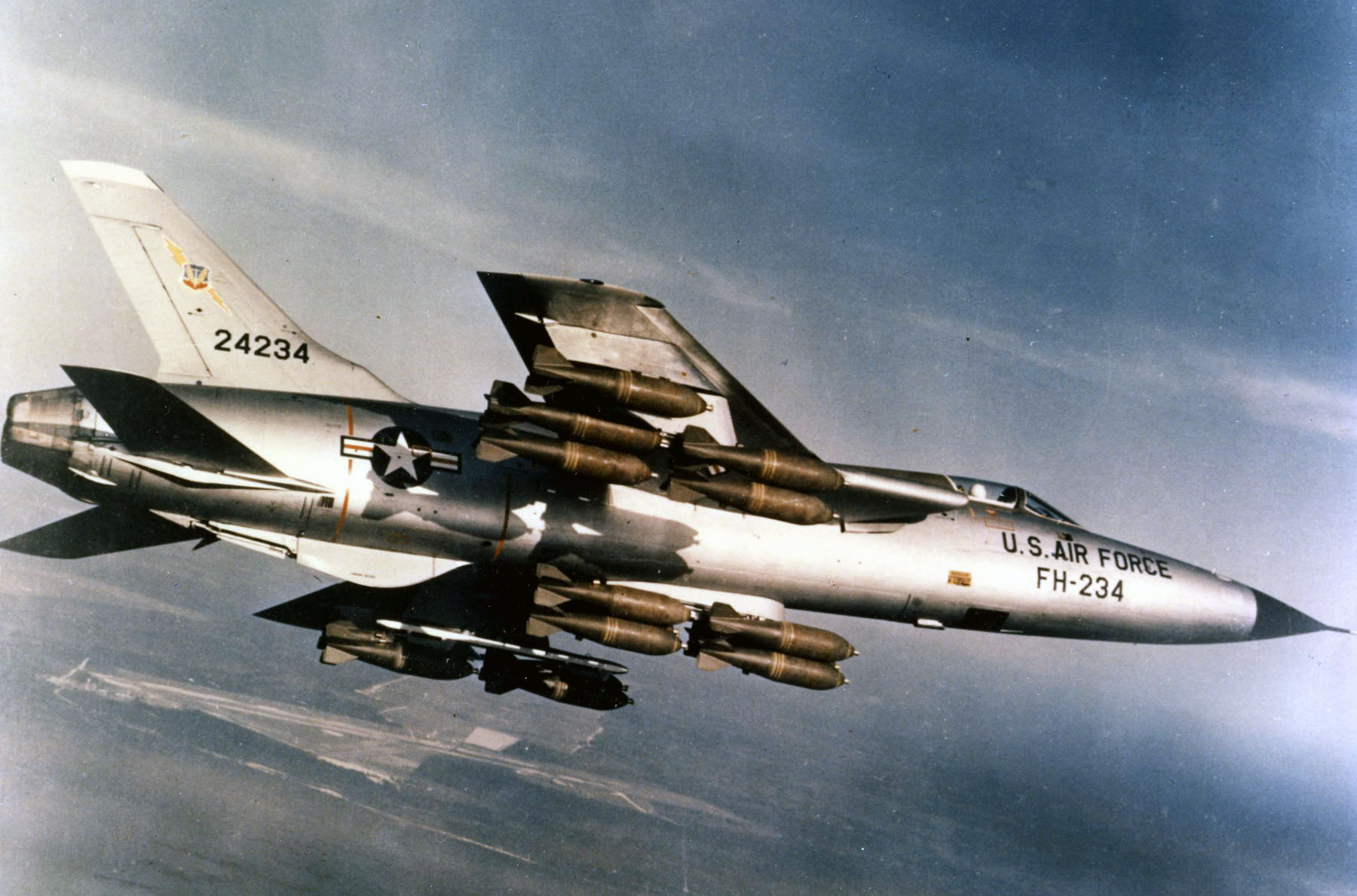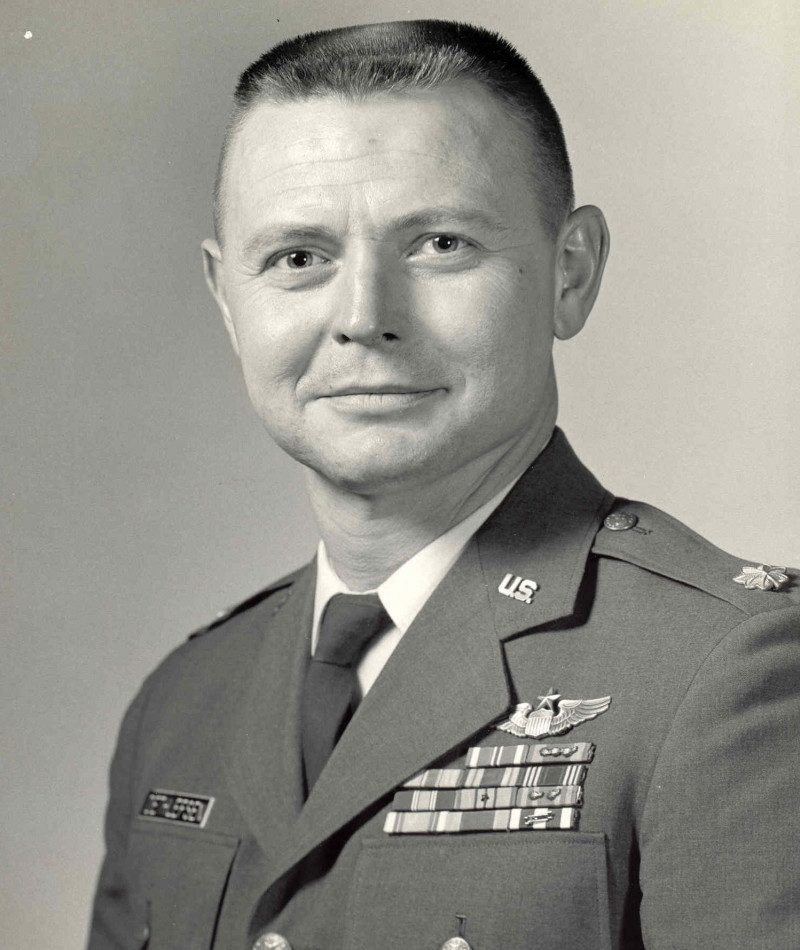
MEDAL OF HONOR
MAJOR MERLYN H. DETHLEFSEN, UNITED STATES AIR FORCE
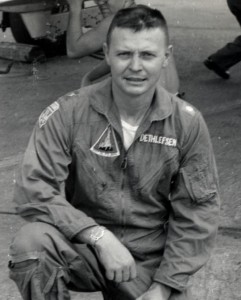
The President of the United States of America, in the name of Congress, takes pleasure in presenting the Medal of Honor to Major Merlyn Hans Dethlefsen, United States Air Force, for conspicuous gallantry and intrepidity at the risk of his life above and beyond the call of duty while serving with the 354th Tactical Fighter Squadron, 355th Tactical Fighter Wing, near Thai Nguyen, North Vietnam, on 10 March 1967. Major Dethlefsen was one of a flight of F-105 aircraft engaged in a fire suppression mission designed to destroy a key anti-aircraft defensive complex containing surface-to-air missiles (SAM), an exceptionally heavy concentration of anti-aircraft artillery, and other automatic weapons. The defensive network was situated to dominate the approach and provide protection to an important North Vietnam industrial center that was scheduled to be attacked by fighter bombers immediately after the strike by Major Dethlefsen’s flight. In the initial attack on the defensive complex the lead aircraft was crippled, and Major Dethlefsen’s aircraft was extensively damaged by the intense enemy fire. Realizing that the success of the impending fighter bomber attack on the center now depended on his ability to effectively suppress the defensive fire, Major Dethlefsen ignored the enemy’s overwhelming firepower and the damage to his aircraft and pressed his attack. Despite a continuing hail of anti-aircraft fire, deadly surface-to-air missiles, and counterattacks by MIG interceptors, Major Dethlefsen flew repeated close range strikes to silence the enemy defensive positions with bombs and cannon fire. His action in rendering ineffective the defensive SAM and anti-aircraft artillery sites enabled the ensuing fighter bombers to strike successfully the important industrial target without loss or damage to their aircraft, thereby appreciably reducing the enemy’s ability to provide essential war material. Major Dethlefsen’s consummate skill and selfless dedication to this significant mission were in keeping with the highest traditions of the U.S. Air Force and reflect great credit upon himself and the Armed Forces of his country.
General Orders: GB-51, February 8, 1968
Action Date: 10-Mar-67
Service: Air Force
Rank: Major
Company: 354th Tactical Fighter Squadron
Regiment: 355th Tactical Fighter Wing
Division: Takhli Royal Thai Air Base, Thailand
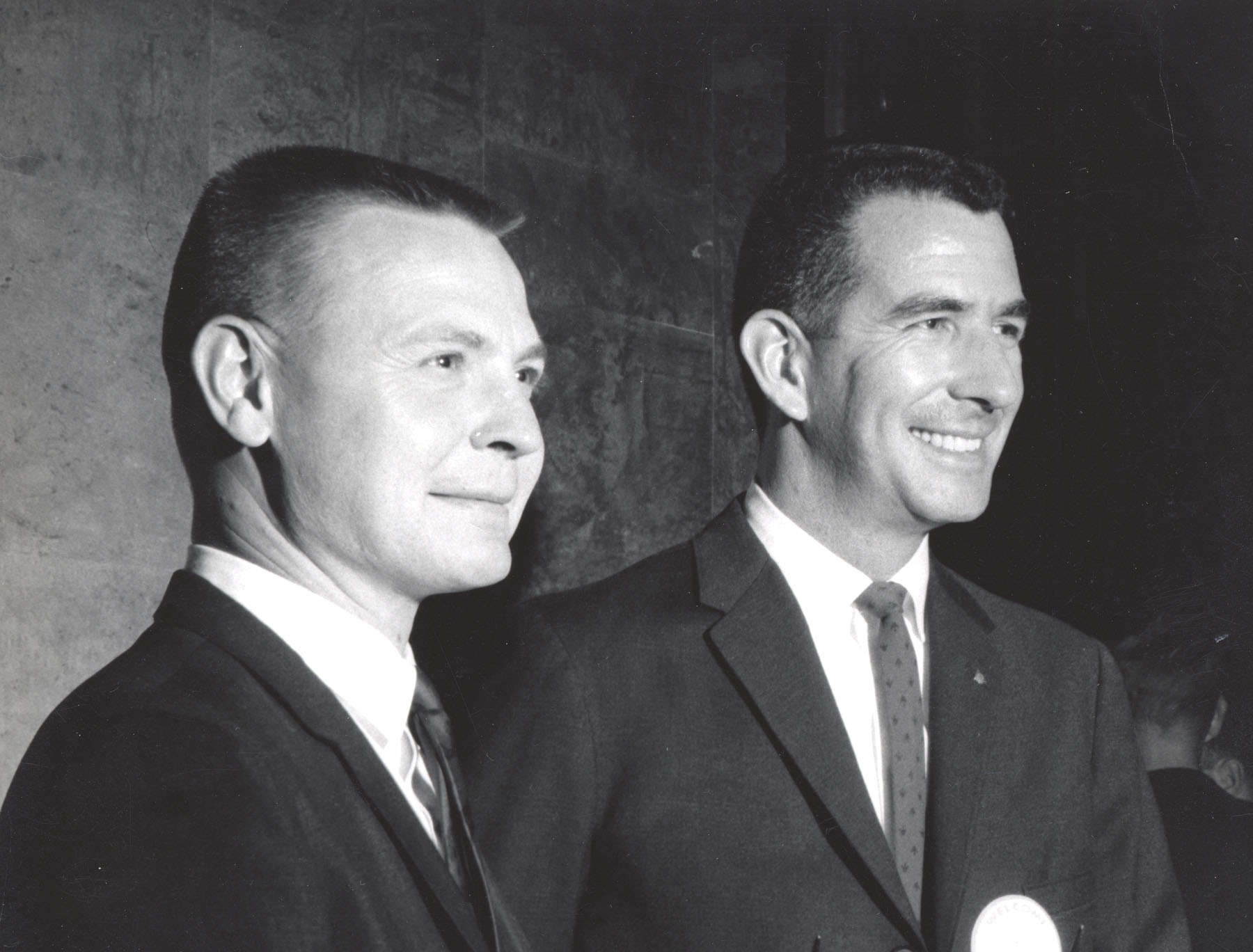
AIR FORCE CROSS
CAPTAIN KEVIN A. GILROY, UNITED STATES AIR FORCE
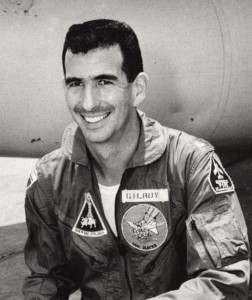
The President of the United States of America, authorized by Title 10, Section 8742, United States Code, takes pleasure in presenting the Air Force Cross to Captain Kevin A. Gilroy (AFSN: 0-3109656), United States Air Force, for extraordinary heroism while serving as Electronics Warfare Officer of an F-105 aircraft of the with the 354th Tactical Fighter Squadron, 355th Tactical Fighter Wing, Takhli Royal Thai Air Base, engaged in a pre-strike, missile suppression mission against the Thai Nguyen Steel Works in North Vietnam on 10 March 1967. On that date, Captain Gilroy guided his pilot in attacking and destroying a surface-to-air missile installation protecting one of the most important industrial complexes in North Vietnam. He accomplished this feat even after formidable hostile defenses had destroyed the lead aircraft and had crippled a second. Though his own aircraft suffered extensive battle damage and was under constant attack by MiG interceptors, anti-aircraft artillery, automatic weapons, and small arms fire, Captain Gilroy aligned several ingenious close range attacks on the hostile defenses at great risk to his own life. Due to his technical skill, the attacks were successful and the strike force was able to bomb the target without loss. Through his extraordinary heroism, superb airmanship and aggressiveness, Captain Gilroy has reflected the highest credit upon himself and the United States Air Force.
General Orders: Department of the Air Force, Special Order GB-297 (August 15, 1967)
Action Date: 10-Mar-67
Service: Air Force
Rank: Captain
Company: 354th Tactical Fighter Squadron
Regiment: 355th Tactical Fighter Wing
Division: Takhli Royal Thai Air Base
SILVER STAR
MAJOR KENNETH HOLMES BELL, UNITED STATES AIR FORCE
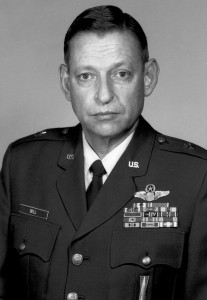
The President of the United States of America, authorized by Act of Congress, July 8, 1918 (amended by act of July 25, 1963), takes pleasure in presenting the Silver Star to Major Kenneth Holmes Bell (AFSN: FR-25966), United States Air Force, for gallantry in connection with military operations against an opposing armed force while serving as Pilot of an F-105 Thunderchief of the 355th Tactical Fighter Wing, Takhli Royal Thai Air Base, Thailand, PACIFIC Air Forces, in Southeast Asia on 10 March 1967. On that date, Major Bell was a member of a surface-to-air missile suppression flight in support of a strike against a large industrial complex. Major Bell and his flight, with great courage, flew through anti-aircraft defenses which were so dense that the flight leader was downed, and all three of the remaining flight members’ aircraft were damaged. Major Bell’s aircraft was damaged to the extent that aircraft control was marginal. However, he elected to remain in the target area flying through the hail of flak three more times until he had the key missile installation shattered and burning from a series of vicious attacks. Throughout the entire flight, Major Bell exhibited complete disregard for his personal welfare in the face of overwhelming odds. By his gallantry and devotion to duty, Major Bell has reflected great credit upon himself and the United States Air Force.
General Orders: Headquarters, Pacific Air Force, Special Orders No. G-1014 (July 15, 1967)
Action Date: 10-Mar-67
Service: Air Force
Rank: Major
Company: 355th Tactical Fighter Wing
Division: Takhli Royal Thai Air Base, Thailand
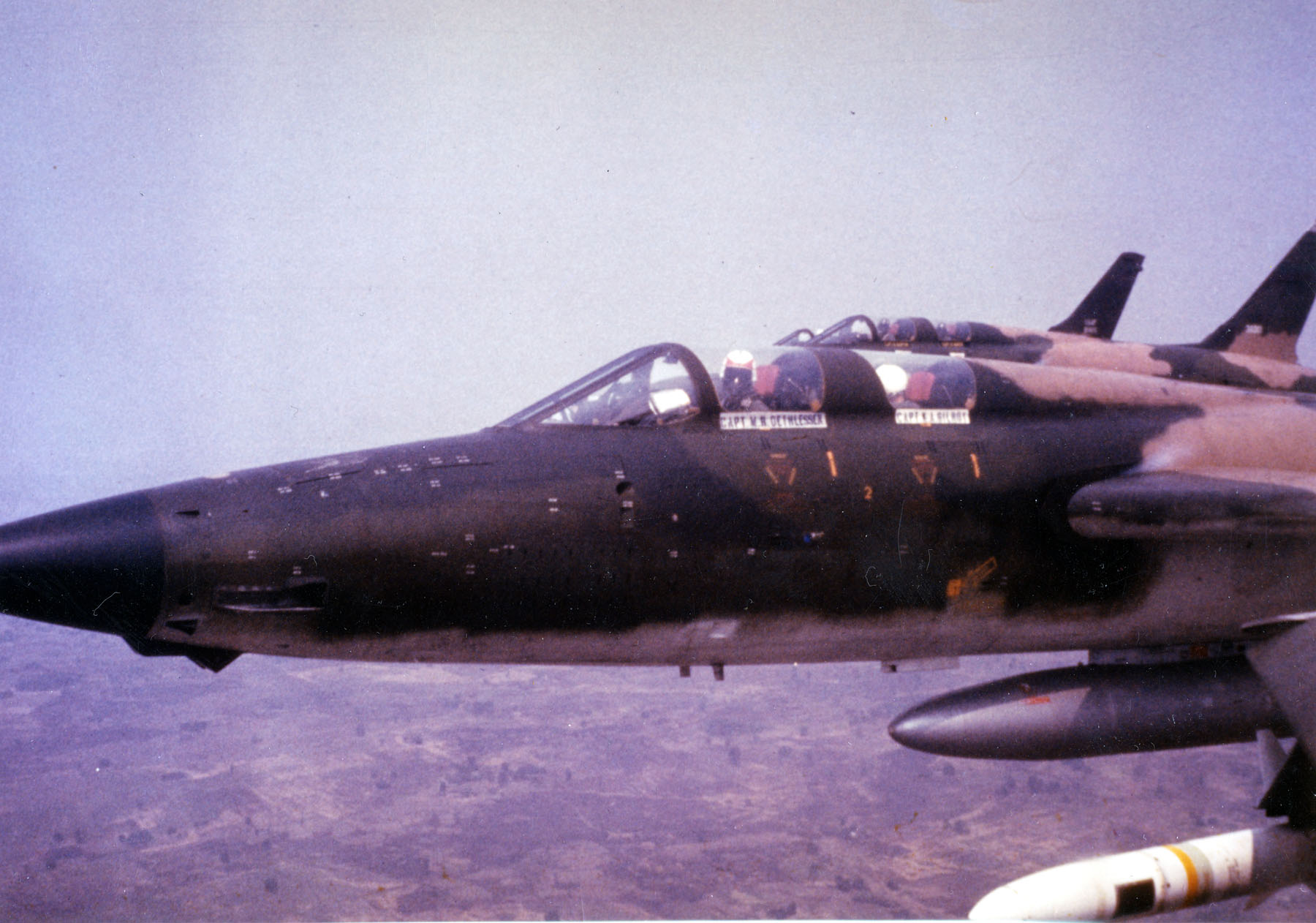

The F-105F/G Thunderchief was 67 feet (20.422 meters) long with a wingspan of 34 feet, 11 inches (10.643 meters) and overall height of 20 feet, 2 inches (6.147 meters). Its wings were swept 45° at 25% chord. The angle of incidence was 0° and there was no twist. The wings had 3° 30′ anhedral. The total wing area was 385 square feet (35.8 square meters). Modified to the Wild Weasel III configuration, it had an empty weight of 31,279 pounds (14,188 kilograms), and a maximum takeoff weight of 54,580 pounds (24,757 kilograms).
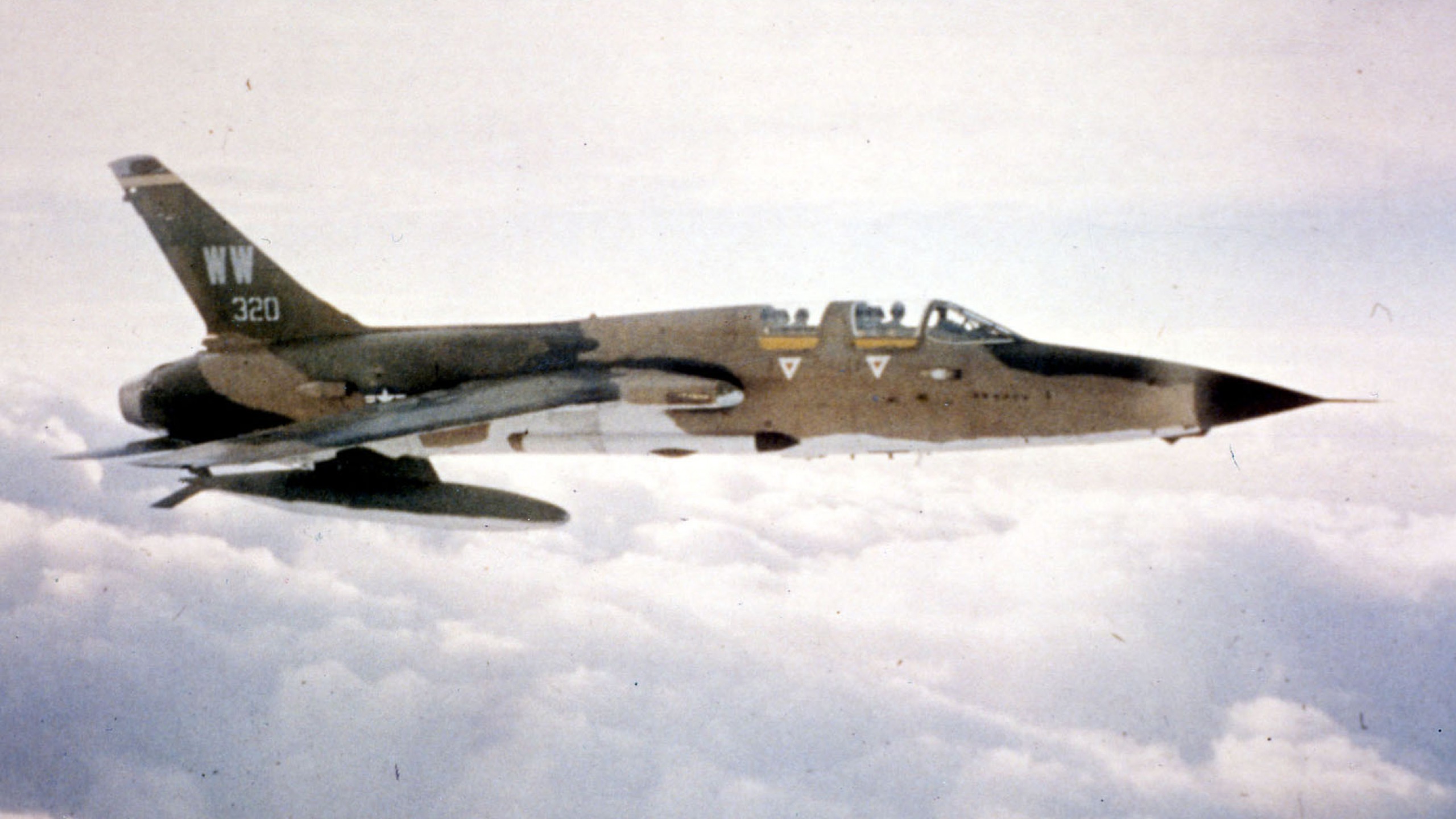

The F-105G Wild Weasel III had a cruising speed of 514 knots (592 miles per hour/952 kilometers per hour). Its maximum speed was 681 knots at Sea Level—0.78 Mach—and 723 knots (832 miles per hour/1,339 kilometers per hour) at 36,000 feet (10,973 meters)—Mach 1.23. It could climb to 30,000 feet (9,144 meters) in 28.0 minutes. The F-105G’s combat ceiling was 43,900 feet (13,381 meters), and it had a combat radius of 391 nautical miles (450 statute miles/724 kilometers). The maximum ferry range, with external fuel tanks, was 1,623 nautical miles (1,868 statute miles/3,006 kilometers).
The Wild Weasel III was armed with one M61A1 Vulcan 20 mm six-barrel rotary cannon with 581 rounds of ammunition, one AGM-78 Standard High-Speed Anti-Radiation Missile (HARM), and two AGM-45A Shrike anti-radiation missiles.
65 F-105Fs were converted to the F-105G Wild Weasel III configuration. Republic Aviation Corporation built 833 F-105 Thunderchief fighter bombers at its Farmingdale, New York, factory. 395 were lost during the Vietnam War. 334 were shot down, mostly by antiaircraft guns or missiles, and 17 by enemy fighters. Another 61 were lost due to accidents. The 40% combat loss is indicative of the extreme danger of the missions these airplanes were engaged in.
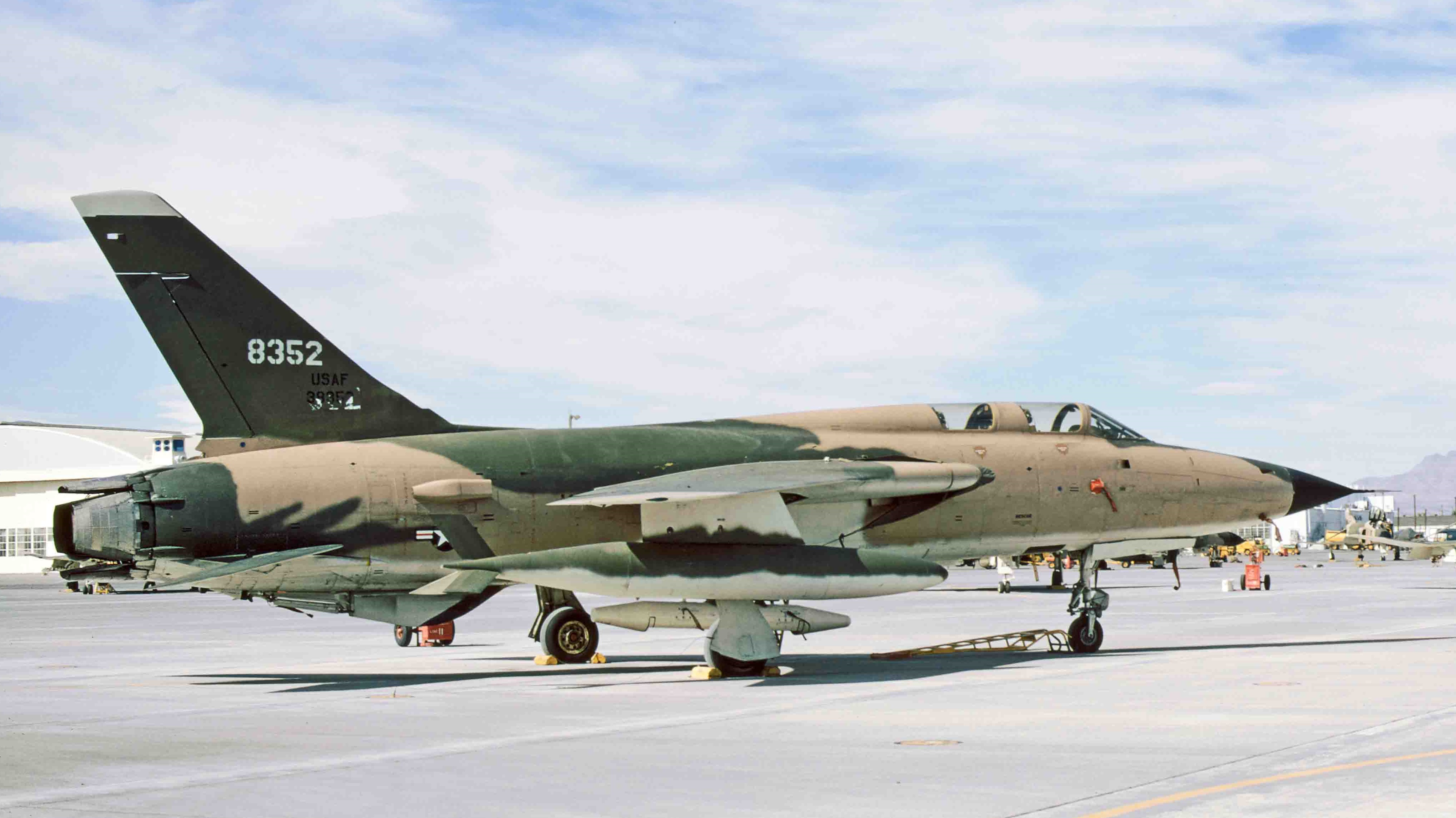
The Wild Weasel III was armed with one M61A1 Vulcan 20 mm six-barrel rotary cannon with 581 rounds of ammunition, one AGM-78 Standard High-Speed Anti-Radiation Missile (HARM), and two AGM-45A Shrike anti-radiation missiles.
65 F-105Fs were converted to the F-105G Wild Weasel III configuration. Republic Aviation Corporation built 833 F-105 Thunderchief fighter bombers at its Farmingdale, New York, factory. 395 were lost during the Vietnam War. 334 were shot down, mostly by antiaircraft guns or missiles, and 17 by enemy fighters. Another 61 were lost due to accidents. The 40% combat loss is indicative of the extreme danger of the missions these airplanes were engaged in.
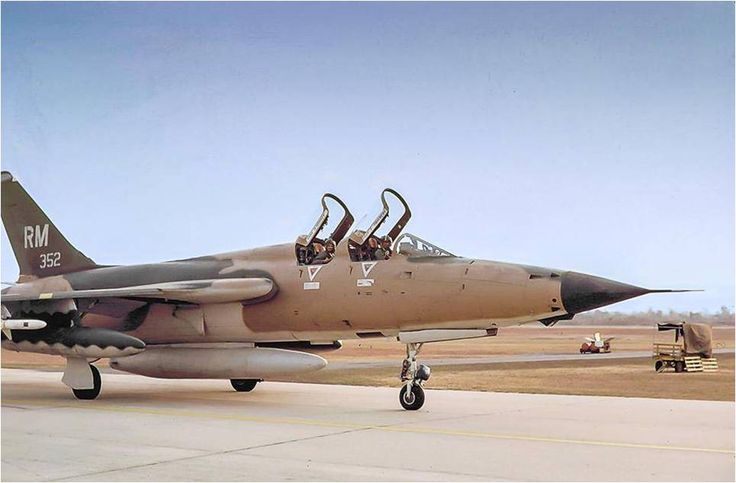
© 2019, Bryan R. Swopes
